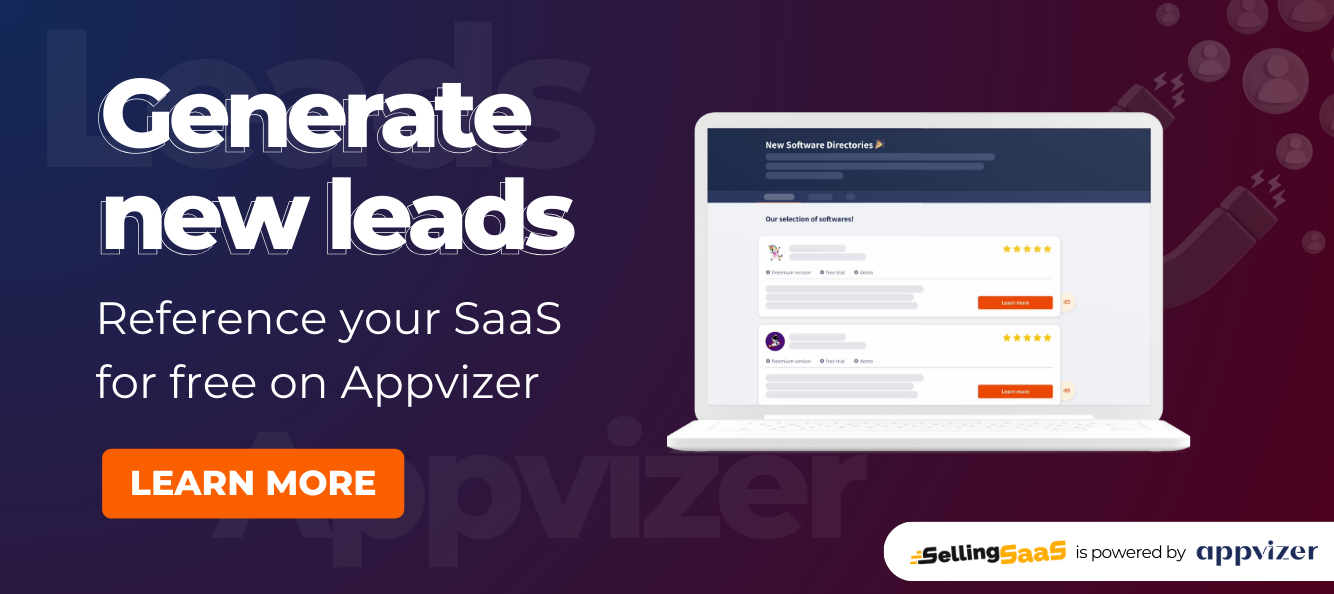Software as a Service (SaaS) has significantly transformed the business world, offering a new paradigm of software delivery and utilization. This cloud-based model allows organizations to access and operate software over the internet, bringing in advantages like scalability, accessibility, and cost-effectiveness. As more businesses shift to this model, SaaS applications have become integral to daily operations, driving a surge in their popularity across various industries.
Prioritizing Security in SaaS
With the increasing reliance on SaaS platforms, security concerns have moved to the forefront. The very nature of SaaS – remote, cloud-based, and often involving third-party providers – introduces unique security challenges. Protecting sensitive data, ensuring compliance with various regulations, and guarding against cyber threats are paramount. Addressing these security issues is not just about safeguarding information; it’s about maintaining business continuity, building customer trust, and upholding the company’s reputation.
The following sections will delve into the common security risks associated with SaaS platforms, providing insights into their nature and the potential impact on businesses.
I. Common SaaS Security Risks
A. Data Security: The Core of SaaS Concerns
Data security is the most critical aspect of SaaS security, encompassing several key areas:
- Unauthorized Access to Sensitive Data: The risk of unauthorized access is heightened in SaaS applications due to their accessibility over the internet. This can lead to sensitive data being exposed or misused.
- Data Breaches and Leakage: SaaS platforms can be targets for cyberattacks leading to data breaches. The consequences of such breaches are far-reaching, potentially resulting in loss of customer trust and legal repercussions.
- Data Loss or Compromise: The potential for data loss due to system errors, accidental deletions, or malicious activities is a significant concern. Ensuring data integrity and availability is crucial for business operations.
B. Regulatory Compliance: A Critical Aspect
Compliance with various regulations is another major area of concern for SaaS applications:
- Lack of Control over Data Location: SaaS models often involve data being stored across different locations and jurisdictions, complicating compliance with data residency laws.
- Compliance with Industry Regulations: SaaS providers and users must adhere to regulations such as GDPR for data protection and HIPAA for health information, which dictate how data should be handled and protected.
- Legal Consequences of Non-Compliance: Non-compliance can lead to legal actions, fines, and a damaged reputation. Understanding and adhering to relevant regulations is essential.
C. Identity and Access Management Risks
Managing user access and identity is a cornerstone of SaaS security:
- Weak Authentication and Authorization Mechanisms: Inadequate authentication processes can leave SaaS applications vulnerable to unauthorized access.
- Privileged User Access and Responsibility: Managing access for users with elevated privileges requires careful oversight to prevent abuse or misuse of access rights.
- Insider Threats and Data Theft: Risks from within the organization, such as insider threats or data theft, necessitate robust monitoring and control mechanisms.
In summary, understanding these common SaaS security risks is the first step toward developing effective strategies to mitigate them. As we progress, we will explore the challenges in managing SaaS security and best practices for ensuring a secure SaaS environment.
II. Challenges in SaaS Security Management
Navigating the security landscape of SaaS applications involves overcoming several unique challenges. These challenges are often related to the nature of cloud services and the complexities of managing security in a shared responsibility model. Understanding these challenges is crucial for developing effective strategies to address them.
A. Overcoming Transparency and Control Issues
In a SaaS environment, users often face issues related to transparency and control over the security measures:
- Limited Visibility and Control over Security Measures: Users typically do not have complete visibility into the security infrastructure of the SaaS provider. This can make it challenging to assess the security posture and align it with the organization’s standards.
- Dependency on SaaS Provider for Security Updates and Patches: Users must rely on their SaaS providers to update and patch software. This dependency can be problematic if the provider does not promptly address known vulnerabilities, leaving users at risk.
- Misalignment between SaaS Provider and Customer Security Policies: There can be a discrepancy between the security policies and practices of the SaaS provider and its users. Such misalignment might result in security gaps and increased vulnerability to threats.
B. Integration and Configuration Risks
Integrating and configuring SaaS applications also presents its own set of risks:
- Complexity of Integrating SaaS Applications: Integrating multiple SaaS applications can lead to complex security environments where consistent security policies are difficult to enforce.
- Misconfiguration and Inadequate Security Settings: Misconfiguration of SaaS applications is a common issue that can lead to significant security vulnerabilities. Ensuring correct configuration and continuous monitoring of security settings is essential.
- Volume and Complexity of SaaS Application Updates: SaaS applications are frequently updated, and keeping track of these updates can be challenging. Each update may introduce new features or change existing functionalities, which could impact the overall security of the application.
Addressing these challenges requires a proactive approach and a strong partnership with SaaS providers. In the next section, we will explore best practices that can help mitigate these risks and enhance the overall security of SaaS applications.
III. Challenges in SaaS Security Management
Navigating the security landscape of SaaS applications involves overcoming several unique challenges. These challenges are often related to the nature of cloud services and the complexities of managing security in a shared responsibility model. Understanding these challenges is crucial for developing effective strategies to address them.
A. Overcoming Transparency and Control Issues
In a SaaS environment, users often face issues related to transparency and control over the security measures:
- Limited Visibility and Control over Security Measures: Users typically do not have complete visibility into the security infrastructure of the SaaS provider. This can make it challenging to assess the security posture and align it with the organization’s standards.
- Dependency on SaaS Provider for Security Updates and Patches: Users must rely on their SaaS providers to update and patch software. This dependency can be problematic if the provider does not promptly address known vulnerabilities, leaving users at risk.
- Misalignment between SaaS Provider and Customer Security Policies: There can be a discrepancy between the security policies and practices of the SaaS provider and its users. Such misalignment might result in security gaps and increased vulnerability to threats.
B. Integration and Configuration Risks
Integrating and configuring SaaS applications also presents its own set of risks:
- Complexity of Integrating SaaS Applications: Integrating multiple SaaS applications can lead to complex security environments where consistent security policies are difficult to enforce.
- Misconfiguration and Inadequate Security Settings: Misconfiguration of SaaS applications is a common issue that can lead to significant security vulnerabilities. Ensuring correct configuration and continuous monitoring of security settings is essential.
- Volume and Complexity of SaaS Application Updates: SaaS applications are frequently updated, and keeping track of these updates can be challenging. Each update may introduce new features or change existing functionalities, which could impact the overall security of the application.
Addressing these challenges requires a proactive approach and a strong partnership with SaaS providers. In the next section, we will explore best practices that can help mitigate these risks and enhance the overall security of SaaS applications.
IV. Best Practices for Mitigating SaaS Security Risks
To effectively address the security risks associated with SaaS applications, organizations need to adopt a comprehensive set of best practices. These practices are designed to enhance the security posture of SaaS environments and mitigate potential vulnerabilities.
A. Thorough Vendor Assessment and Due Diligence
Carefully selecting and evaluating SaaS providers is crucial for ensuring the security of SaaS applications:
- Evaluating the Security Measures and Practices of SaaS Providers: Conduct an in-depth assessment of the security measures implemented by potential SaaS providers. This includes examining their data encryption methods, incident response plans, and regular security auditing processes.
- Requesting Security Certifications and Compliance Reports: Seek proof of the provider’s compliance with industry security standards and regulations like GDPR or HIPAA. This can be done by requesting relevant security certifications and compliance reports.
- Assessing the Vendor’s Disaster Recovery and Incident Response Capabilities: Understand how the provider handles disaster recovery and responds to security incidents. This is crucial for ensuring that your data remains secure and accessible in the event of a breach or other disasters.
B. Implementing Strong Access Controls and Identity Management
Robust access control and identity management are vital for securing SaaS applications:
- Implementing Multi-factor Authentication and Role-based Access Controls: Enhance security by adopting multi-factor authentication (MFA) and implementing role-based access controls (RBAC) to ensure that users have access only to the necessary data and functions for their role.
- Regularly Reviewing and Revoking User Access: Periodically review user access privileges and promptly revoke access for users who no longer require it. This helps minimize the risk of unauthorized access and data breaches.
- Training Employees on Security Awareness and Best Practices: Conduct regular training sessions for employees on cybersecurity best practices. Educate them on the importance of strong password practices, recognizing phishing attempts, and securely handling sensitive data.
C. Ensuring Data Protection and Encryption
Data protection and encryption are key components of SaaS security:
- Encrypting Data in Transit and at Rest: Ensure that all sensitive data is encrypted both in transit and at rest to protect it from unauthorized access and breaches.
- Implementing Data Loss Prevention (DLP) Measures: Use DLP tools to monitor and control data movement and prevent unauthorized transfer of sensitive information outside the network.
- Regularly Backing up Data and Testing Restoration Processes: Maintain regular backups of critical data and test restoration processes to ensure quick recovery in the event of data loss.
By implementing these best practices, organizations can significantly enhance the security of their SaaS applications. These measures not only protect against existing threats but also provide a robust framework to adapt to emerging risks in the dynamic SaaS landscape.
V. Conclusion
As we conclude our exploration of SaaS security issues, it’s clear that while SaaS platforms offer immense benefits in terms of efficiency and scalability, they also bring a unique set of security challenges. Understanding and effectively managing these risks is not just a technical necessity but a strategic imperative for businesses relying on SaaS solutions.
Reviewing Key SaaS Security Insights
This article has covered the spectrum of common security risks associated with SaaS, from data breaches and compliance challenges to identity management issues. Each of these areas presents specific threats that require targeted strategies to address. The vulnerabilities inherent in SaaS platforms, such as dependency on providers for security patches and the complexities of integration, add layers of challenges in maintaining a secure environment.
The Importance of Proactive Security Measures
The key to mitigating SaaS security risks lies in being proactive and vigilant. Conducting thorough assessments of potential SaaS providers, implementing strong access controls, and ensuring robust data encryption are essential steps. Regular reviews and updates of security policies, alongside employee training and awareness programs, form the backbone of a resilient SaaS security strategy.
Making SaaS Security a Business Priority
Ultimately, the responsibility for securing SaaS applications is a shared one, involving both providers and users. Organizations must prioritize SaaS security as part of their overall security strategy, recognizing that the strength of their security measures directly impacts their operational integrity, customer trust, and business reputation.
In an era where digital transformation is accelerating, and cloud services are becoming increasingly integral to business operations, prioritizing SaaS security is not an option but a necessity. By embracing best practices and staying ahead of emerging threats, businesses can harness the full potential of SaaS solutions while safeguarding their critical assets and maintaining a robust security posture.


